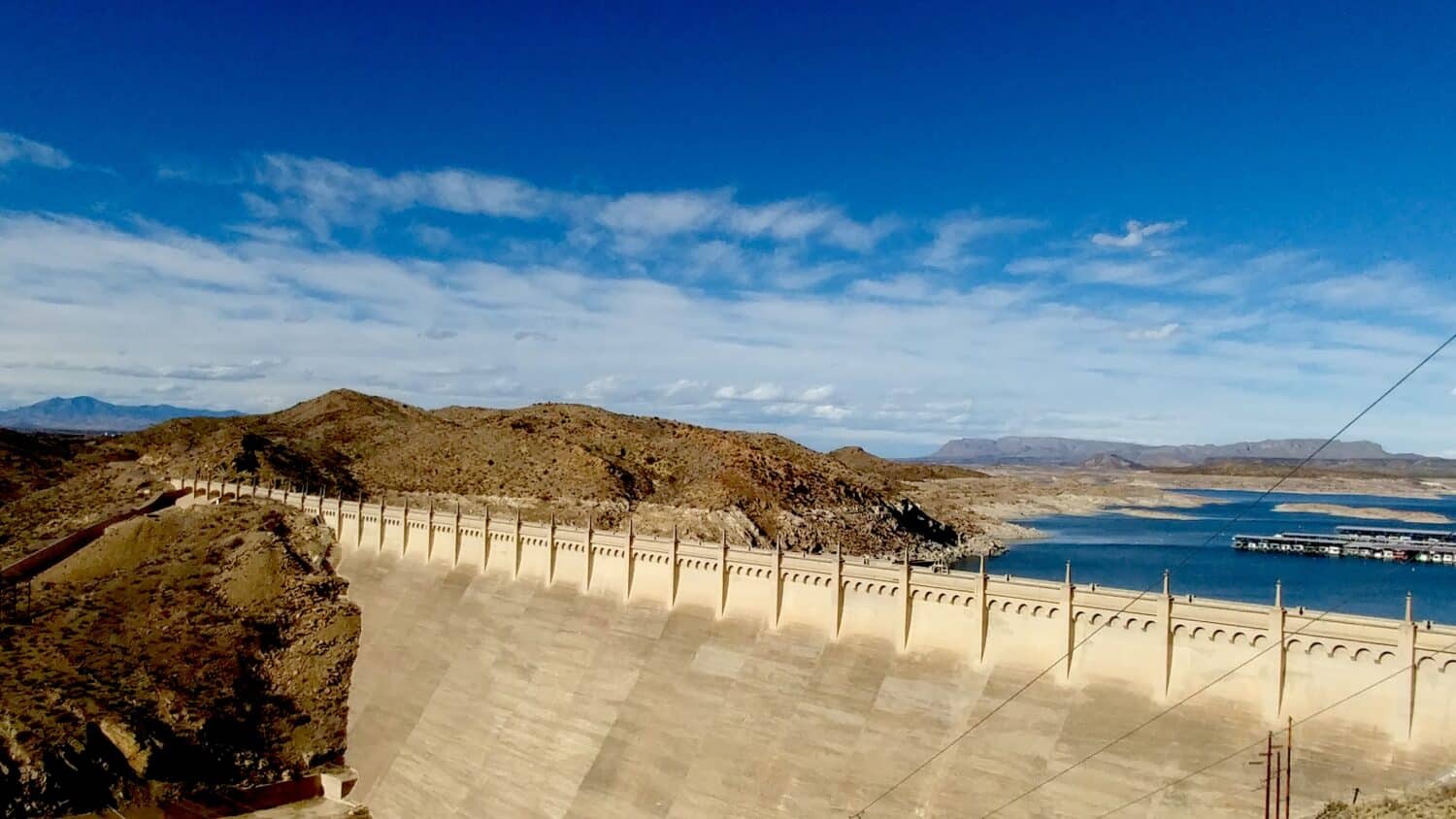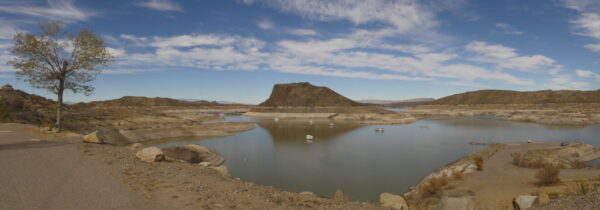
Visitors to Truth or Consequences (T or C) come to soak in the hot springs and visit the many art galleries. Some might stop in at the Geronimo Springs Museum or check out Spaceport, but there is a well-kept secret just a few miles east of town that many of them are unaware of—the Damsite Historic District, worth a visit any time of year. Whether for the history or its activities, one could easily spend hours or a full day here.
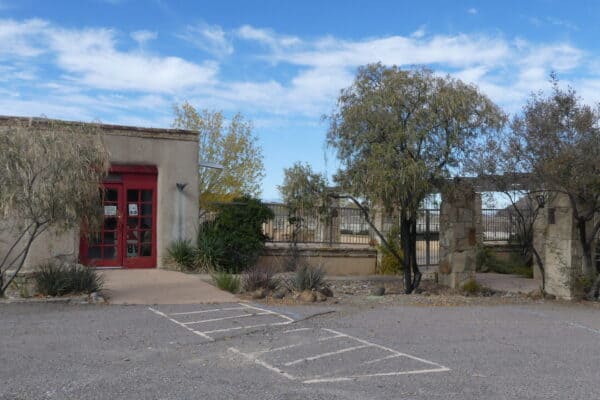
Damsite is undergoing a restoration, which is just the beginning of the vision that locally owned company Lago Rico, Inc., has for the area. In conjunction with the Bureau of Reclamation (BOR) new electric and plumbing were installed in the 16 casitas and stucco removed to expose their beautiful rock walls. Phase 2, beginning 2022, continues work on the remaining casitas; roads are to be paved; and a new boat ramp will welcome recreationists. The once fabulous restaurant will be up and running again, and equally important, the BOR will install signs so all can find this treasure.
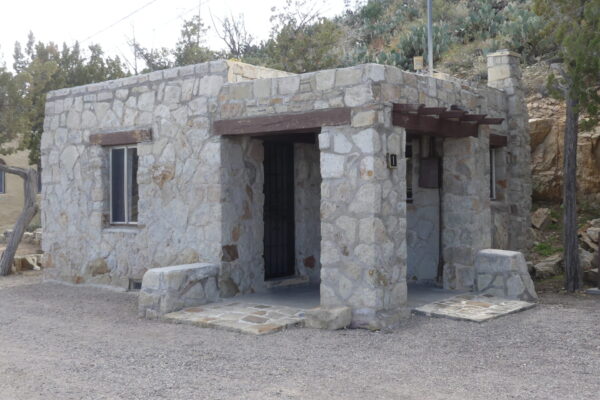
A Brief History
Elephant Butte Dam went through several unofficial name changes: it was suggested that it be named for then President Woodrow Wilson or for the town of Engle, before settling on Elephant Butte, a volcanic formation in the lake that resembles an elephant. The lake became New Mexico’s largest body of water and the dam has been listed on the National Register of Historic Places, for good reason. Built between 1910 and 1916, it was the first of its type—Hoover and Grand Coulee, among others, were modeled after it.
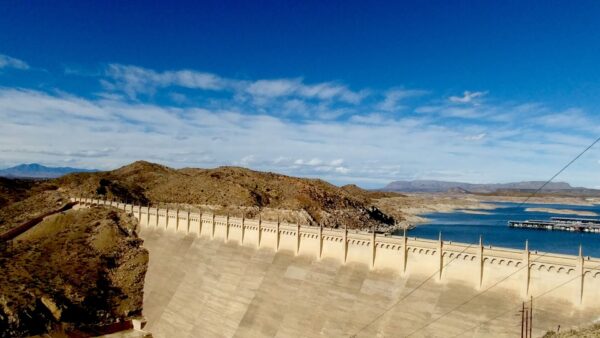
Elephant Butte Lake, is more than just a hole in the ground filled with water—lots of water—from the Rio Grande. Crucial to agriculture in southern New Mexico, the dam also provides power and helps flood control. In the late 19th century the U.S. government decided that the Rio Grande’s waters could be better distributed and managed through a series of water control projects, and Elephant Butte Dam became key. Although funding was approved in 1905, the world’s largest manmade reservoir wasn’t finished and formally dedicated until 1916. In 1940 a hydroelectric power plant replaced the original plant.
The dam created the world’s second largest irrigation reservoir, with a capacity of more than 2 million acre-feet (an acre-foot is the volume of water needed to cover 1 acre of surface area to a depth of 1 foot). Today the reservoir is about 40 miles long, averages 1.5 miles wide, and features roughly 200 miles of shoreline. Since its completion it has changed the face of, and remains crucial to, agriculture in southern New Mexico, irrigating more than 178,000 acres of cotton, pecans, chile peppers, onions, and melons, to name a few. Water for irrigation as well as for power also is sent to Texas and Mexico. The dam plays an important role in flood control throughout the Rio Grande corridor, and of course its capacity for recreation cannot be dismissed: the lake is heavily used for camping, fishing, and boating, all of which contribute to the area’s economy.
Begun in 1910, this major undertaking required manpower, resulting in many jobs, which in turn created three camps (small towns) at Damsite and Paseo del Rio (now the National Fish Hatchery Campground) to accommodate the workers and their families. One of the camps, however, ended up under water in the reservoir and the others were simply disbanded. Some workers also lived in nearby Hot Springs (renamed Truth or Consequences in 1950) and Engle.
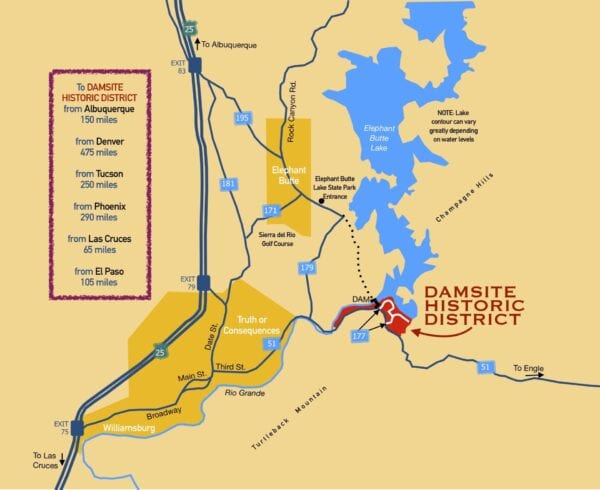 Note that it was not only men who built the dam, but also horses and mules. Elephant Butte Dam is the last great American engineering effort to rely primarily on literal horsepower. The mules, horses, and the people who tended them are some of the most unsung heroes of the dam. Also not to be forgotten is the role the railroad played in construction; the road that runs in front of the casitas was a part of the Santa Fe RR Engle spur line. The railroad transported everything from workers to lumber to boulders that were used to create the dam, some weighing up to eight tons. It also carried curious tourists who wanted to witness the construction to the hotel that was near the current lodge.
Note that it was not only men who built the dam, but also horses and mules. Elephant Butte Dam is the last great American engineering effort to rely primarily on literal horsepower. The mules, horses, and the people who tended them are some of the most unsung heroes of the dam. Also not to be forgotten is the role the railroad played in construction; the road that runs in front of the casitas was a part of the Santa Fe RR Engle spur line. The railroad transported everything from workers to lumber to boulders that were used to create the dam, some weighing up to eight tons. It also carried curious tourists who wanted to witness the construction to the hotel that was near the current lodge.
Today
Damsite Historic District staff lead group tours with advance notice. The Welcome Center is housed in a restored boat repair shop, and its museum is worth a visit to take in the photos and mementos on display. Equally entertaining and educational is a seasonal historic boat tour (reservations required) around the lake. Your knowledgeable guide will point out Fort McRae, which was erected to protect citizens from hostiles as well as to establish a presence.
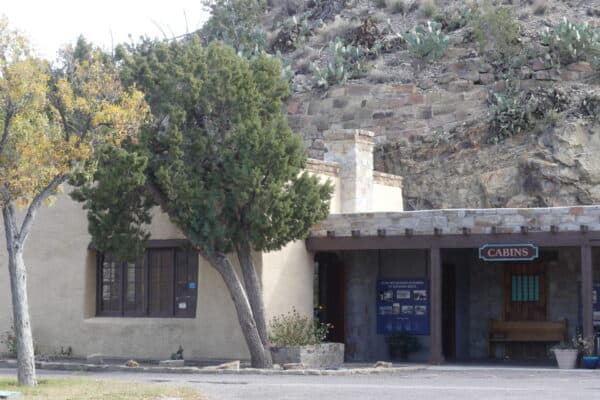
Lago Rico, Inc., is the concession that manages the lake’s two marinas: Marina del Sur, accessed at the main entrance to Elephant Butte Lake State Park, has a large rental boat fleet, and at Damsite Marina, you can rent paddleboards and kayaks. Both marinas have boating and camping supplies.

Through Lago Rico you can book a room at the lodge or a casita for a nice getaway. The lodge has eight rooms and is almost a museum in itself—historic photos line the halls and one can almost see the boats landing below from the expansive porch. You can have your special event here as well, but book early, especially for weddings—it’s a popular spot. Most of the casitas were built by the Civilian Conservation Corps (CCC) in 1940 as resort lodging and can be rented nightly or longer term—each has a view of the lake.
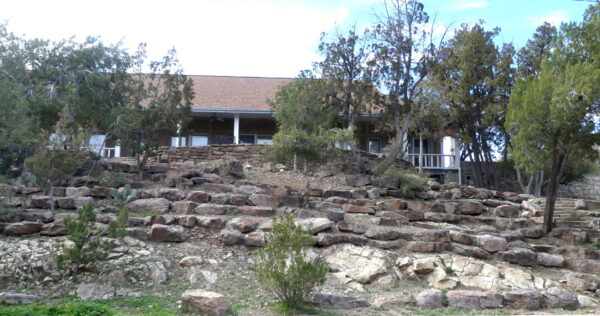
Plans are in the works to reopen the restaurant and its patio that overlook the lake. Keep an eye out on social media and bulletin boards for announcements of special events such as art shows, photography exhibits, music, luminaria walks, nature walks, and more.
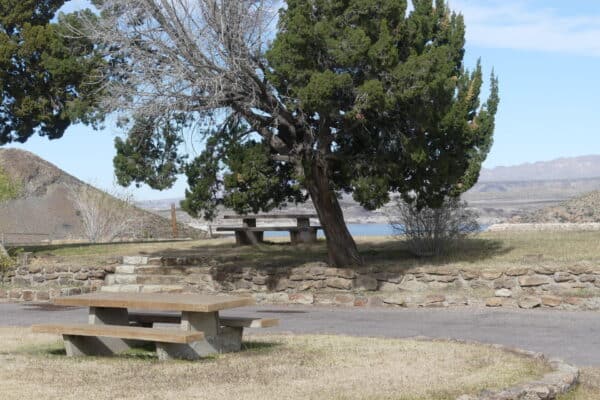
Go birdwatching, wildlife watching, fishing, camping, picnicking, or hiking (a map of all the trails also is in the works)—all within five miles of T or C, three to Elephant Butte. At the main parking lot, feeding the resident squirrels is a popular pastime for all: check out the items for sale in the Welcome Center, then purchase by donation organic, unsalted, raw peanuts for the local bushy-tailed rodents.

Just a couple miles before the turnoff to Damsite is the National Fish Hatchery Campground, a great place for birding along the Rio Grande with a mile-long wheelchair-accessible interpretive trail. Notice the unusual building between the river and road that looks like it came directly from medieval times—it was initially a powderhouse for dynamite during dam construction, then served as a jail.
Stroll the grounds to soak up the local history—there’s plenty of it. Admire the miles of hand-carved rockwork and foundations that were part of the camp of 3,000 more than 100 years ago. Have a picnic with spectacular views. Hike the miles and miles of trails. Be part of Sierra County’s best-kept secret.
